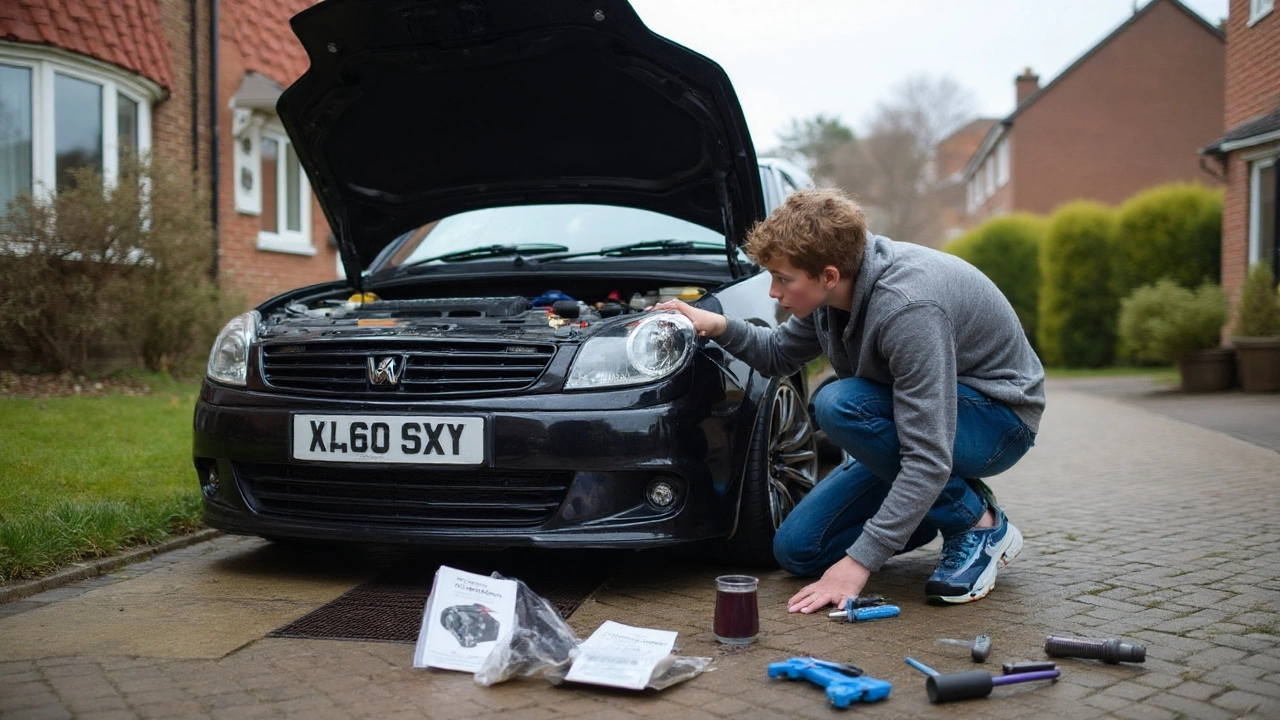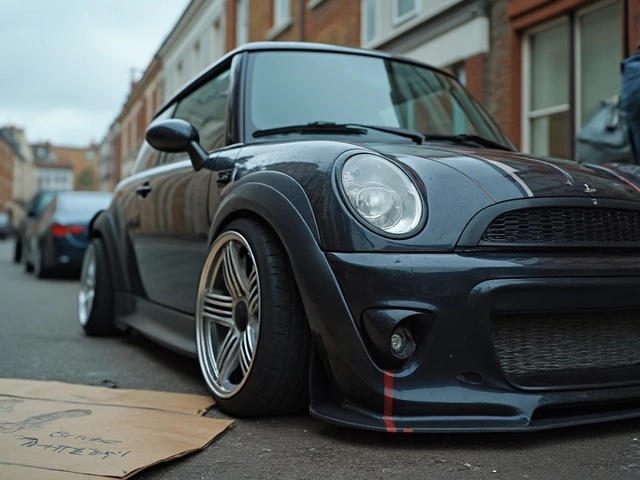People often get this wrong: just swapping out your factory airbox for a shiny new cold air intake doesn’t always mean instant power, or that your car’s computer instantly panics. You might expect roaring engine upgrades with zero headaches, but the reality is more complicated (and not as scary) than many reckon. Cold air intakes have become a top pick for anyone looking to boost engine sound, a bit of performance, or just to bling up their engine bay. But what happens if you skip the ECU tune and bolt one on anyway? Will things go up in smoke? Or could your car benefit even without a remap? It’s a question tossed around by car forums and mates at weekend meets. If you’ve ever stood in Supercheap Auto or Repco, eyeing up cold air intake kits, but hesitated because you weren’t sure about that whole ‘tune’ thing, you’re not alone. Let’s get under the bonnet and clear the air (see what I did there?).
What Does a Cold Air Intake Actually Do?
At its core, a cold air intake is designed to pull cooler, denser air into your engine. Why does this matter? Simple: cooler air carries more oxygen. More oxygen means you can burn more fuel, creating a bigger bang—a bigger bang means more power, or at least the potential for more. The standard air box on most factory cars is built for reliability, noise control, emissions, and cost. That usually means it draws air from inside the engine bay, which gets hot—especially here in Melbourne, baking away in police-baiting city tunnels. A cold air intake moves the air filter outside the engine bay, sometimes closer to the inner guard, the front bumper, or a spot under the headlight. The idea is the air filter gets a stream of chillier, denser air from outside the car. Not only does a well-designed intake bring in better air, it usually features smoother piping and fewer restrictions. This can help your engine "breathe" a bit easier.
But don’t expect magic. Most factory engine computers are clever. They check air/fuel ratios and can adapt to small changes by themselves. Still, the gains from a cold air intake might only be 2-6% more power—meaning that 120kW Corolla might end up at a wild 125kW, enough for most drivers to never notice. Independent dyno tests back this up. For instance, a 2022 test run on a stock Mazda 3 by CarAdvice Australia showed a 3.8% increase in peak horsepower at the wheels with a cold air intake—hardly neck-snapping. But what people often do notice: the engine sounds throatier, there’s more induction noise, and the throttle feels a tad sharper. For some, that’s reason enough to upgrade.
On the other hand, it’s worth remembering not all cold air intakes are equal. Cheap knock-offs might draw hot air or come with poor-quality filters that let in dust. On some turbo cars, an intake with the wrong diameter can mess with the airflow sensor, making the car run rough. Then you’ll really wish you had budgeted for a tune (more on that later). But installed correctly, and as part of a well-thought plan, a cold air intake alone isn’t the doomsday some make it out to be. Next, we’ll tackle what actually happens if you don’t tune your car after swapping the intake.
Do You Need a Tune After Installing a Cold Air Intake?
Now this is where the pub debates and forum threads really kick off. Put simply: most cars with naturally aspirated engines (that’s no turbo or supercharger) can handle a well-designed cold air intake without a tune. Modern ECUs are what you’d call "self-learning" to a point. They constantly read information from various sensors, including the mass airflow (MAF) sensor and oxygen sensors, and use this data to adjust the air-fuel mixture. If your intake change isn’t extreme, it’ll usually adapt just fine. Plenty of car models have owners running intakes for years without a hiccup—think Mazda 3, Honda Civic, Toyota 86.
Turbocharged cars are fussier. They rely much more on the signals sent to the ECU, because turbos push a heap more air into the engine. If you stick on an intake that changes the diameter or position of the MAF sensor, or creates turbulence, there’s more risk of the computer misreading airflow. When this happens, you get rough idling, poor throttle response, or that dreaded check engine light. On some German turbo engines, even a simple cone filter swap without a tune can make everything go bonkers. The fix? Either find an intake kit designed specifically for your model, one that keeps the airflow readings consistent, or be ready for a tune.
But why do people recommend a tune, even for naturally aspirated cars? Because an ECU tune—sometimes called a ‘remap’—can unlock extra power by adjusting timing and fueling tailored to the improved airflow. It’s about squeezing the most out of your mods in a safe way. Without a tune, the benefits of a cold air intake are real, but typically small. Also worth knowing: the degree to which a tune is needed really depends on your car’s setup, age, and what mods you pile on next. There’s a big difference between a single cold air intake and a combo of intake, headers, full exhaust, and cam upgrades.
| Car Type | Cold Air Intake Needs Tune? | Typical Power Gain without Tune |
|---|---|---|
| Naturally Aspirated (Most Japanese compacts) | No (if MAF not disturbed) | 2-6% |
| Turbocharged (Modern VW, Ford EcoBoost, Subaru WRX) | Sometimes Yes (watch MAF) | 2-8% |
| Older Cars with Simple ECUs (1990s Celica, Commodore) | Rarely | 1-4% |
So, is a tune always required? No. Is it a smart idea, especially if you chase more power or have a turbo? Absolutely. But if you’re just after a better sound and a small bump in throttle response, you can often skip it safely—especially if you keep everything else stock.

Potential Risks and How to Avoid Them
Here’s where the rubber really hits the road. Going for a cold air intake without a tune isn’t usually risky if you stick to reputable brands and if the installation doesn’t mess with your engine’s sensors. But ignoring the basics can lead to a can of worms. The first big one—lean running. If the new intake lets in lots more air and the ECU can’t figure it out, the car might run ‘lean’, meaning too much air compared to fuel. This can cause pinging, hot running, or even long-term engine damage, though with mild intakes this is rare in late-model cars. The second? Dirty or oiled filter elements. Some cold air filters use oil, which, if overdone, can coat your airflow sensor and cause misreadings. That leads to poor drivability. Always follow the manufacturer’s instructions on filter cleaning and oiling.
Another risk is sucking in water if the intake is positioned low in the engine bay or behind the bumper. Splash through a deep Melbourne puddle, and you could end up with a hydro-locked engine—a repair that makes your wallet cry. Be careful where your intake sits, especially if your car is daily-driven or you can’t avoid the occasional flooded roundabout. Some intakes offer "hydro shields" or "pre-filters"—worth considering if you’re worried.
Then there's warranty and insurance. Dealers love to blame modifications for unrelated issues. If your car is still under warranty, check the terms. Installing a cold air intake almost always voids the warranty on related engine parts. In the event of a crash, some insurers frown on undeclared modifications. It pays to let them know, just in case—better a higher excess than denied coverage. Factory-style intakes designed to fit specific models are your safest bet to keep things drama-free. And if your car sports one of those older hot-wire airflow sensors (common in 90s Toyotas and Nissans), always ensure the intake keeps the MAF in the same spot and orientation. These sensors are picky.
- Buy from a known brand like K&N, AEM, S&B, or Injen—fitting instructions and quality control are leagues ahead of eBay specials.
- Check if your intake comes with a heat shield to keep hot engine air away.
- Clean and oil filters the right way (not too much oil!).
- Watch the weather—avoid deep water crossings if your filter sits low.
- Re-torque all clamps after a week, especially with engine vibrations.
People sometimes rush a mod and end up with rattles, leaks, or even dirt getting into the motor—so take your time. Give all the hoses a once-over, double-check your wiring, and if the car runs weird, see if your check engine light’s on and get the codes read. Plenty of Melbourne workshops can help, and some performance shops do quick, affordable "checkups" on intakes.
Best Practices for Installing and Using a Cold Air Intake Without a Tune
If you’re itching to get hands-on and install a cold air intake, you’ll want to start right. Begin by researching intakes specifically made for your car model and year. Universal kits are tempting—they’re cheap and promising big gains—but in most real-world cases, they don’t fit well, or might upset the engine sensors (especially in modern cars with strict emissions controls). A good kit will come with instructions, brackets that match up to factory locations, and use the correct size piping for your airflow sensor. Often, it’ll include a new heat shield, mounting grommets, and all the tiny bits you don’t realise you need until you’re halfway through the job.
The right tools help: a decent set of sockets, screwdrivers, and maybe some pliers. Set aside two hours (three if you work slow, or get distracted by mates), and don’t rush. Always disconnect your battery before you start wrenching near sensors or wiring. Take photos as you remove the stock bits so you can put everything back if needed. Once you’ve buttoned up the new intake, start the car and check for air leaks by gently revving the engine and listening for a hissing sound near connections.
Once the intake is in, take your car for a gentle drive before hammering it. Give the ECU a bit of time (they adapt quickly, but not instantly). Some people even disconnect the battery for an hour to help the ECU reset, but this is rarely needed with recent cars—let’s not lose your radio presets unless you really have to. Watch for a steady idle, smooth acceleration, and no check engine lights. If everything feels good, crack a beer and enjoy that new growl when you punch the throttle. If something’s off, retrace your steps—most issues come down to loose clamps or hoses.
Zeroing in on the car nerd side, keep these tips in mind for the best experience:
- cold air intake gains are mostly about throttle response and noise on a stock car. Don’t expect huge dyno numbers unless paired with a tune and more mods.
- Keep your factory air box in the garage—you might need it when you sell the car or go for a roadworthy.
- If you plan future mods, like a performance exhaust or headers, then a tune becomes a better idea. The more parts you swap, the more helpful a remap is.
- Join car-specific forums or Facebook groups. There’s usually somebody locally in Melbourne who’s already done what you’re thinking about—maybe even with a writeup or video how-to.
- Listen for rattles or odd noises—sometimes new intakes resonate at certain RPMs, but that can often be fixed with a rubber grommet or moving a bracket.
A cold air intake without a tune is a low-risk, mostly reversible tweak on most modern Aussie daily drivers. If you install it right, keep it clean, and pay attention to any changes in how the engine feels, you’re unlikely to run into drama. If performance is the ultimate goal—or if you’re chasing turbocharged horsepower in a modern Euro car—you’ll want to budget for a tune eventually. But for the rest of us, the sound alone can be worth it. Just be honest about your goals and know what your car can handle without crossing the line from fun to expensive mistake.




